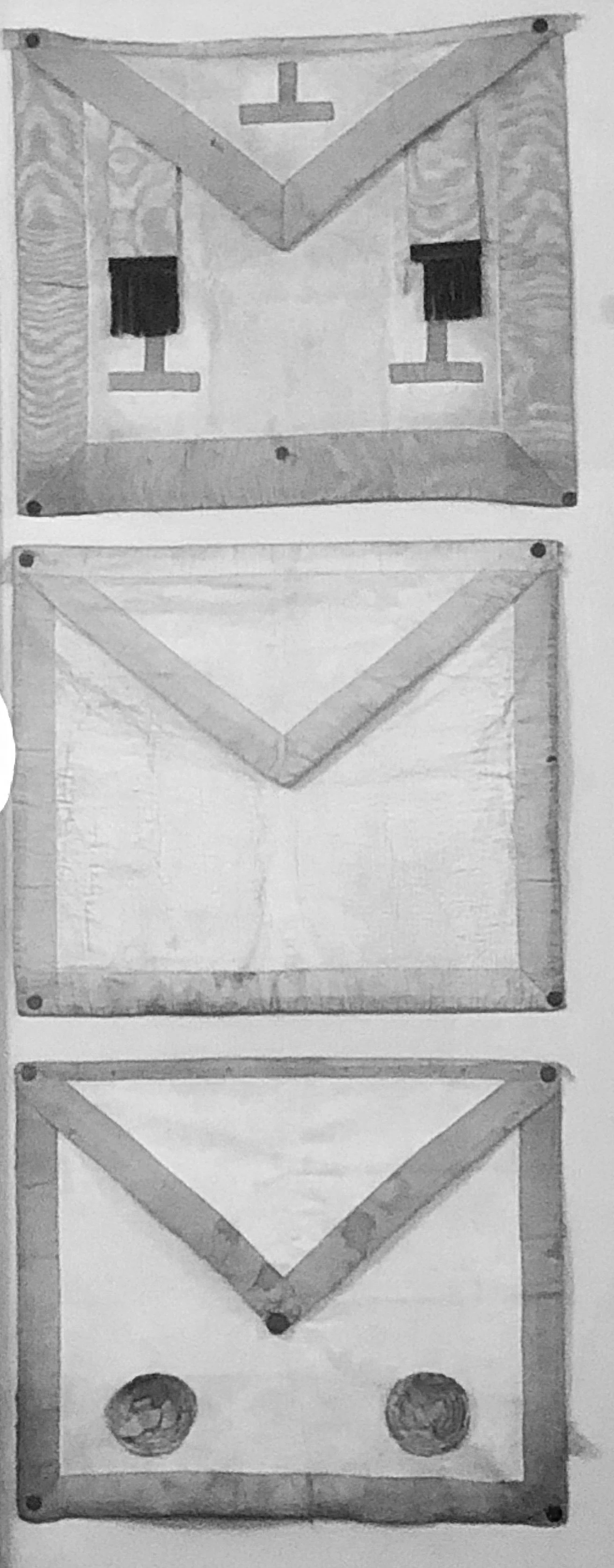Forget-Me-Nots and Paper Aprons
Forget-Me-Not Flowers
From its beginning in 1933, Nazi Germany placed severe legal, political, and civic restrictions on institutions it saw as hostile to, or inconsistent with its aims and ideals. Along with Jews, Catholics, Jehovah’s Witnesses, those who would now be part of the LGBTQ+ community and those with mental and physical handicaps, Freemasons were also targeted for criminal prosecution and exclusion from society. The Enabling Act of 1933 dissolved all Masonic lodges in the Third Reich, confiscated all property and banned members from joining the Nazi Party. A year later, the Ministry of Defence ruled that military and civilian personnel could not be members of Masonic organizations, and Hitler often linked antisemitism to conspiracy theories about Freemasonry. Some Freemasons were political prisoners in concentration camps and were forced to wear an inverted red triangle badge. The SS dedicated two separate units for the pursuit of Masonic organisations and Freemasons; this would continue into the war and extended to countries under German control such as France and Italy.
The most common charges against Freemasonry by the Nazis were conspiratorial and antisemitic; they linked Masonic organizations to Communism, the international press, and the Jewish population. Nazis spread this information through Party newspapers, literature, in speeches, and through propaganda. For example, mock lodge displays were set up with skeletons in Masonic regalia alongside Jewish symbols.
In 1934, members of one of Germany’s pre-war Grand Lodges, the Grand Lodge of the Sun, began wearing the blue forget-me-not instead of the square and compasses on their lapels as a secret mark of identity. The forget-me-not is the informal name for Myosotis, a small flower with blue or purple petals. Throughout this whole era, these flowers appeared on lapels across cities and even concentration camps, worn by brothers whose love for the craft remained strong, even through the worst times. In 1947, when the Grand Lodge of the Sun was reopened, a pin in the shape of a forget-me-not was adopted as an emblem of that first convention by those who survived the Nazi era. It then was also adopted as an official Masonic emblem to honour those brothers who dared to wear the flower openly and to recognize the contributions of Masonic educators.
There are other stories of Masonic meetings being held in secret in the homes of the Brethren of the Lodge. Members would meet in everyday clothing and without regalia, and a bunch of forget-me-nots would be placed on the sideboard in the dining room. When the Lodge had been declared open, the forget-me-nots would be moved on to the dining table, in a symbolic ritual similar to the opening of the tracing boards today.
When the Lodge was closed, the flowers would be moved back accordingly. If German soldiers happened to burst in on a meeting, all they would find was a small group of men sat around a table which had a bunch of flowers on it! It meant nothing to them and there would be no reason to view the situation as suspicious. This was another way in which this beautiful little flower helped perpetuate Masonic ideals, virtues and companionship through those dark times.
Ultimately, Hitler was unsuccessful in eradicating Freemasonry in Germany and beyond. While temples were destroyed, property confiscated and burned and Masons imprisoned and murdered, the mysteries of Freemasonry and the core principles of brotherly love, relief, and truth survived unimpaired in our brothers’ hearts. Masonic organizations promptly rebuilt following the Nazi era once again to thrive in the face of adversity and hardship.
The forget-me-not is a small, unassuming flower but is a symbol of the dedication and courage it takes to hold to Masonic principles, even in the face of grave danger
The Paper Aprons
On the second floor of the Masonic Hall in Scarborough is a small room with a number of very old aprons hanging behind a glass screen. Some are very ornate and unusual in design (from a time before there was a standardised design for an apron).
However, there are three very unassuming craft aprons there. They look slightly unusual, and on closer examination, it appears that they are made of paper! The story behind them is that they were made in a prisoner of war camp and used by Brethren to hold Masonic meetings after dark. This was a highly dangerous pursuit as if they had been found in their possession, the brethren would have probably been shot.
Scarborough Freemasons Paper Aprons
These are the three aprons that are made of paper. They are on display in the Scarborough Masonic Hall.
However, such was their desire for Freemasonry to continue in their hearts, they were willing to take huge risks to practise what they believed in. These stand as a huge testament to the Brethren at that time; that they would rather risk getting caught, than abandon the idea of Freemasonry!
W.Bro. Tony Dyer
Leopold Lodge 1760



